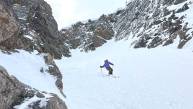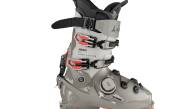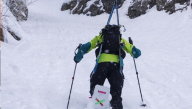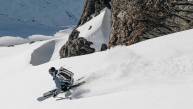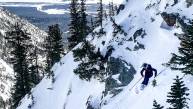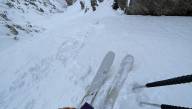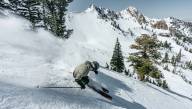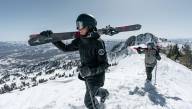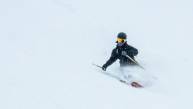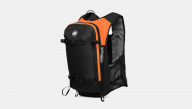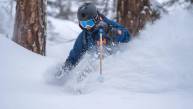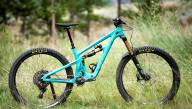tags:
MacKenzie Ryan |
British Columbia, Canada |
tgr news |teton tested |google news |genuine good gear |gear reviews |g3 splitboards |g3 |carbon blacksheep |blacksheep
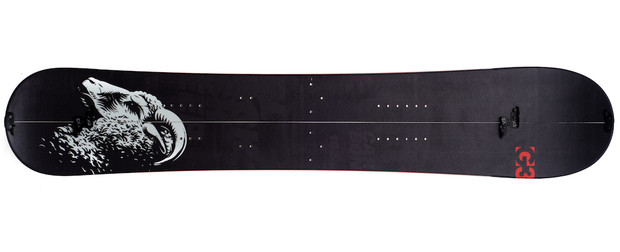 Genuine Guide Gear's Blacksheep. Verde PR Photo.
Genuine Guide Gear's Blacksheep. Verde PR Photo.
The engineers at G3, also known as Genuine Guide Gear, have already established their brand as small but top-notch producers of backcountry skis, probes, shovels, and skins. Now they've set their sights on splitboards.
Just like the name implies, this company's athlete team includes a heavy roster of backcountry guides, which surely gives them a serious leg-up on research & development. Even if the G3 Carbon BlackSheep isn't for you, I recommend keeping an eye on G3 as their splitboard lines progress. They already designed arguably the best splitboard skins on the market. It's only a matter of time before they roll out a set of boards that will be equally game-changing.
I tested G3's super-light BlackSheep Carbon in resettled, knee-deep snow in East Vail's steep-and-tight trees, sun-baked crust, sheer ice, and slush in Big Cottonwood Canyon's south-facing bowls, and back-to-back storm days on Teton Pass. Here's where it excelled, and where it didn't.
Pros: Who Will Love This Deck And Why
Carbon and carbon hybrid splitboards aren't a new technology, per se. Like a lot of things that are all the rage in snowboarding, it's a new-and-improved trend from the 1990's. It just took 20 years for the rest of splitboarding gear to catch up. Now that it has, people are easily and more regularly going on longer, gnarlier tours. The demand for ultra-light backcountry tools has therefore increased. The Carbon BlackSheep meets this demand and then some. To give you an idea of how light it is, at 7 pounds 6 ounces, it's literally two whole ounces less than what I weighed at birth. (Thanks Mom).
While the BlackSheep isn't the lightest splitboard on the market, it's about as light as you can get if you want it to A) not break yourself off after a firm, cliff drop landing in super-cold temperatures, and B) plow through moist, dense snow.
 Freshies on Teton Pass? This board will rock your world. MacKenzie Ryan photo.
Freshies on Teton Pass? This board will rock your world. MacKenzie Ryan photo.
To G3's credit, the BlackSheep rides just like any reverse camber solid board would. It floats through fresh snow effortlessly. Its directional twin shape lets you ride switch in the backcountry, a rare and often under-appreciated experience. Its quadratic sidecut grips surprisingly well, letting you hold your line on icy traverses.
Who Will Love This Board: Some people splitboard only to find powder. In the search for deep, delicious conditions, they'll go on long missions for which light-weight gear really, really matters. The Carbon BlackSheep is for this crew. It's a fairly economical option (about $700) as far as carbon splitboards goes. You also can rest easy knowing you are supporting a progressive company with strong roots in the backcountry.
Cons: Who Won't Dig The BlackSheep
 BlackSheep camber profile. Verde PR photo.
BlackSheep camber profile. Verde PR photo.
Reverse camber snowboards are like four-letter words. Some people use them in almost every situation. Some people use them only for very specific circumstances. Some people never use them, and recoil in disgust when they are mentioned.
Rocker has the reputation of giving you a great ride in powder. The rise in the nose–with the BlackSheep, it's in both the nose and the tail–enables the board to float in deep snow. However, that lift fundamentally decreases the board's contact with snow, inevitably giving it less bite on hardpack.
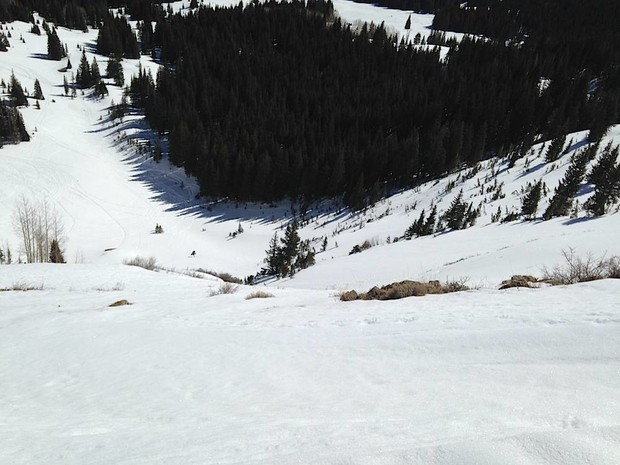 Crusty? This run might not be your season highlight on the BlackSheep. MacKenzie Ryan photo.
Crusty? This run might not be your season highlight on the BlackSheep. MacKenzie Ryan photo.
To minimize the lack of bite, most snowboard manufacturers use mixed camber profiles (and many times, blended sidecuts as well). Think about how many boards, especially powder decks and splitboards, that have reverse camber in the nose and regular camber underfoot and in the tail. Yeah, you're often stuck with what's essentially a directional board, which makes riding switch more challenging. But, your deck planes better, giving it that surfy feeling in powder and allowing you to steer more effectively.
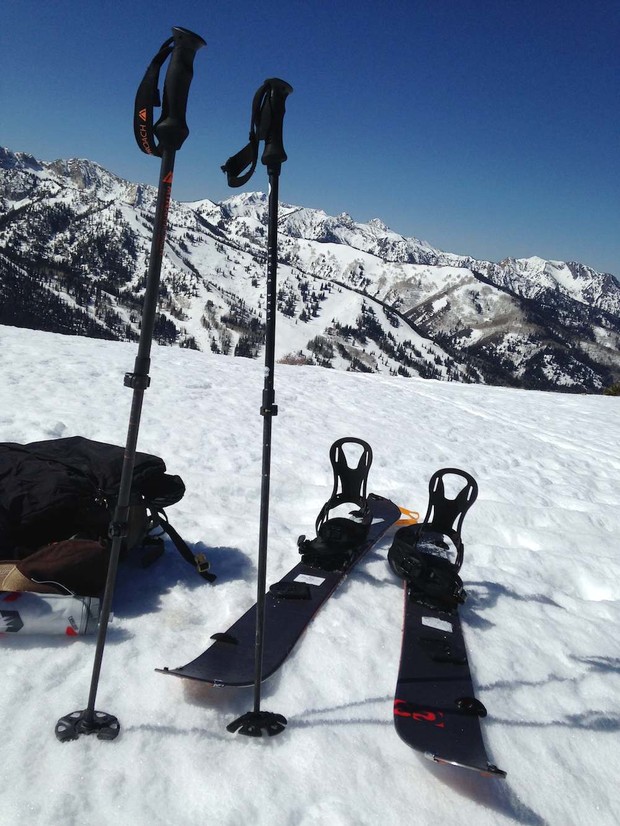 Reverse camber. Not your friend while you're in ski mode. MacKenzie Ryan photo.
Reverse camber. Not your friend while you're in ski mode. MacKenzie Ryan photo.
The downfall with the BlackSheep is that it's a full rocker splitboard with very little taper. It's going to be a great ride for fresh snow (for example, dropping into Teton Pass on a powder day), but it's not going to plane as well as a true directional powder board in older or denser snow (for example, dropping into East Vail trees two weeks after a storm), or on flat terrain.
Even with G3's truly spectacular Alpinist High Traction skins, the rocker complicates how the board works in ski mode. It prevents each ski from getting enough contact with the snow, an anxiety-inducing experience on an icy, crusty, or firm skin track.
Who Won't Love This Board: Some people splitboard no matter what the conditions are. They care more how a board turns in horrendous conditions than it does in powder, and these people might look elsewhere for their splitboard.
The Bottom Line
G3's Carbon BlackSheep splitboard is a great, lightweight splitboard for seeking out softer conditions during long tours. It rides as well as a solid rocker board. The full reverse camber profile means that biting into firm, icy skintracks on the way up or firm, beat-up conditions on the way down is a bit more nerve-wracking than it might be with a board with a regular or mixed camber profile. If you're looking for more the latter style, check out G3's Scapegoat splitboard. At $700, the price is the middle range of splitboard offerings, and a fair ask for a deck this light.
Be sure to check out evo's entire lineup of 15/16 splitboards at evo.com and load one onto your holiday wishlist. Be safe, go deep, and get shacked this winter!




